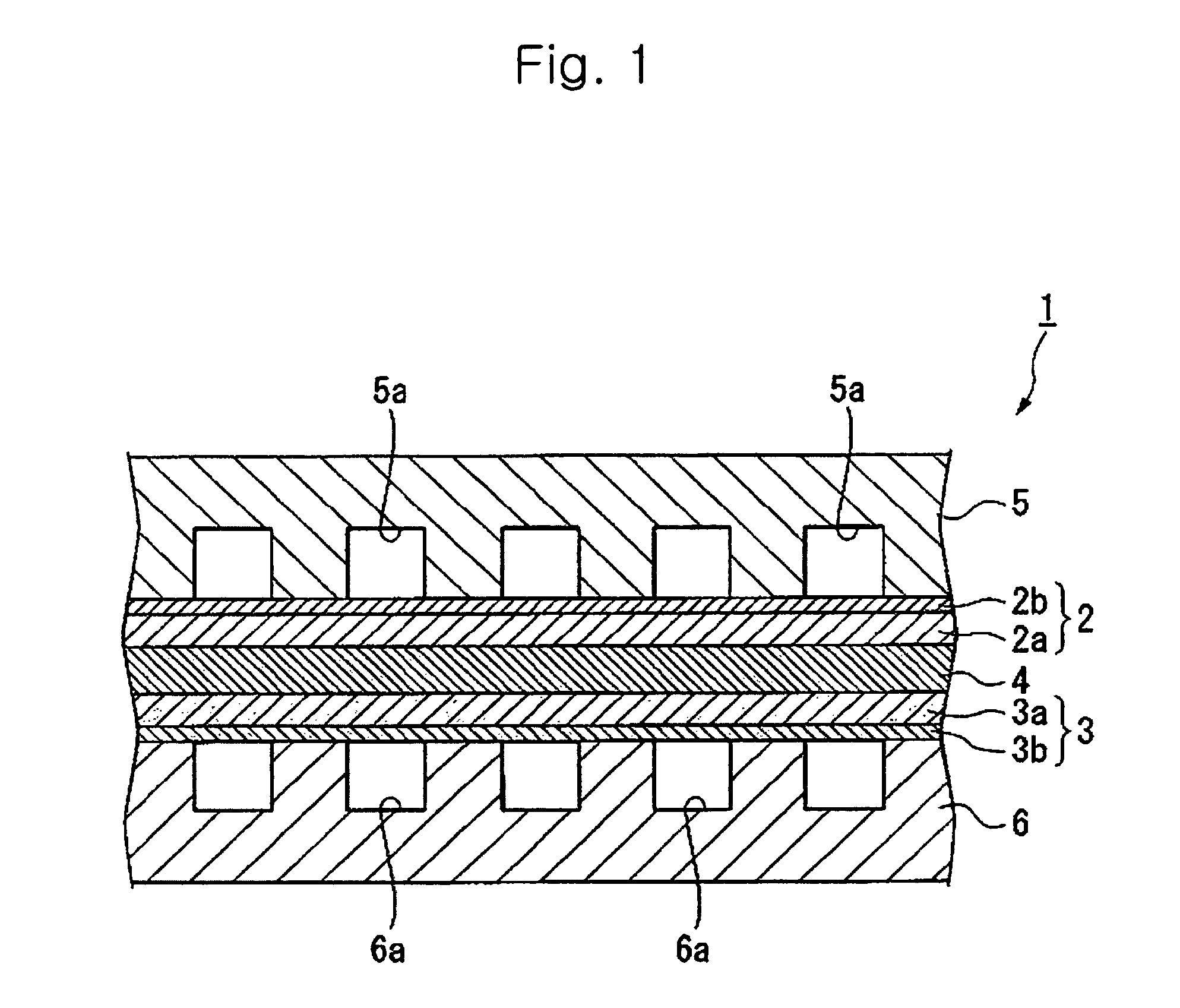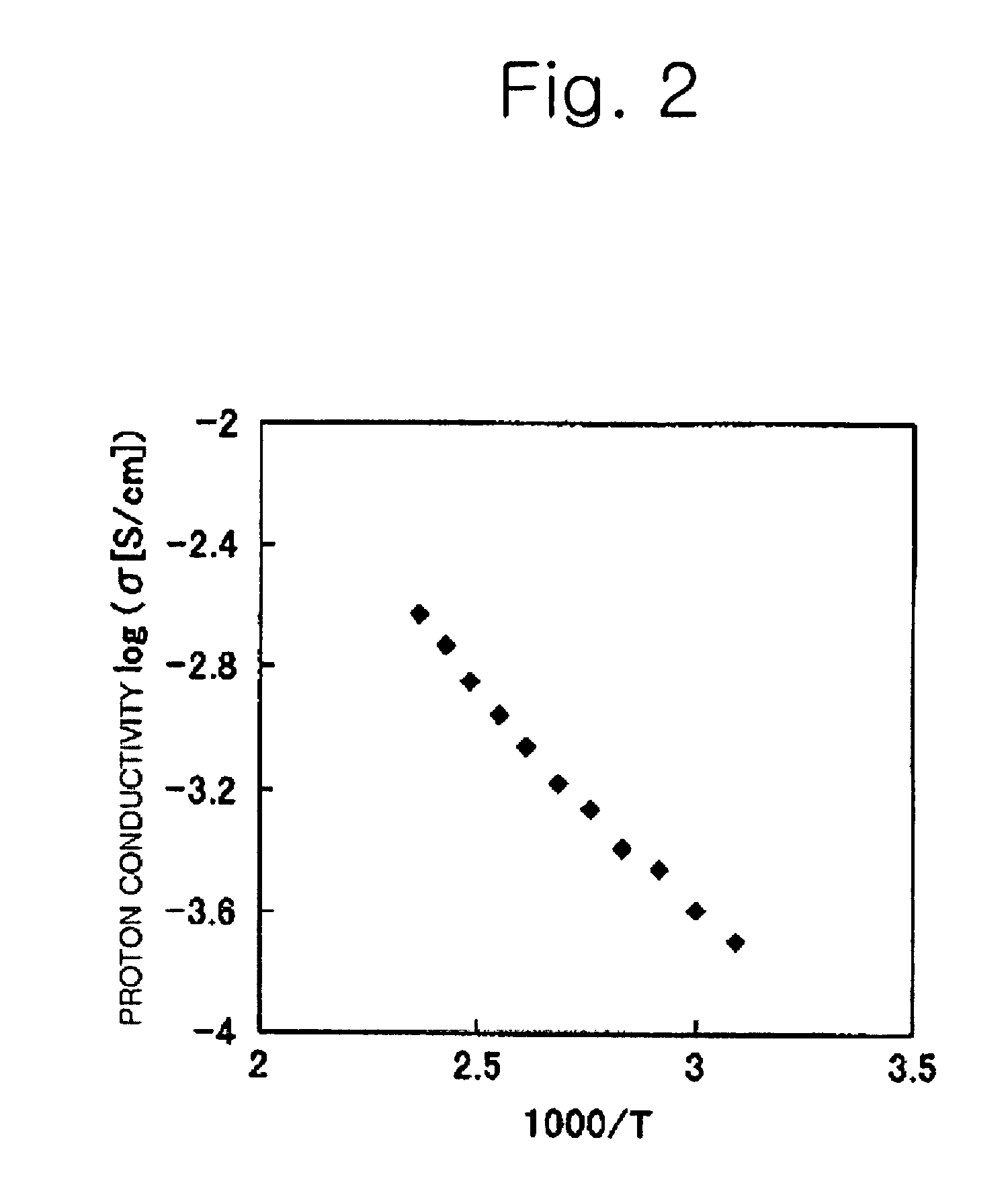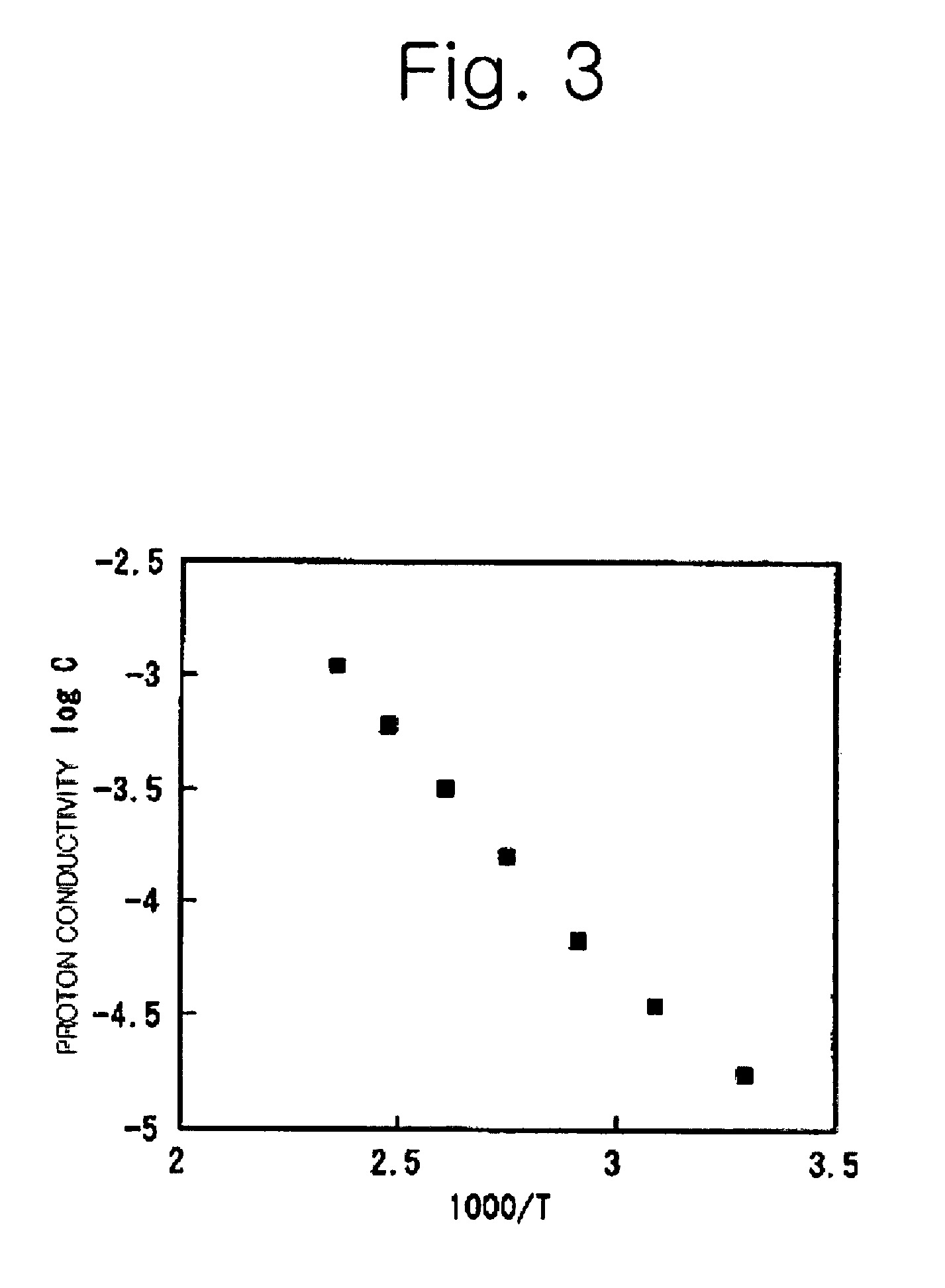Proton conductive electrolyte and fuel cell comprising the same
a technology of proton conductive electrolyte and fuel cell, which is applied in the direction of non-aqueous electrolyte cells, cell components, electrochemical generators, etc., can solve the problems of inability to achieve stable performance, membranes with poor environmental impact, and lack of substantial heat resistance and chemical stability, etc., to achieve good proton conductivity, stable electricity generation performance, and good flexibility
- Summary
- Abstract
- Description
- Claims
- Application Information
AI Technical Summary
Benefits of technology
Problems solved by technology
Method used
Image
Examples
example 1
[0096]Preparation of Polyamidic Acid┘
[0097]Polyamidic acid, a precursor of polyamidic acid derivatives, was synthesized by the following process. Here, a target product was a compound represented by Formula 1 where Ar is benzene, and R is (CH2)10.
[0098]First, 3.45 g of 1,10-diaminodecane (20 mmol) was dissolved in 170 mL of dehydrated N,N′-dimethylformamide (DMF), 4.36 g of pyromellitic anhydride (20 mmol) recrystallized from acetone / hexane was slowly added to the resulting solution, and the resulting solution was stirred at 700 rpm, at 15° C. for one hour and then at 25° C. for 60 hours and then reacted. Next, the reaction solution was precipitated in 4 L of acetone / hydrochloric acid (1 / 4), the resulting solution was collected by filtering, and the collected resulting product was washed with 1 mol / L of an aqueous hydrochloric acid solution and acetone, heated and dried in a vacuum at 60° C. for 36 hours This procedure yielded a white powder of 7.65 g (yield 98%) of polyamidic acid ...
example 2
[0107]┌Preparation of Polyvinyl Sulfamic Acid Copolymer┘
[0108]First, 7.21 g of polyacrylic acid (manufactured by Acros Co.) was dissolved in 1 L of dehydrated N,N′-dimethylformamide (DMF), and then 29.7 g of thionyl chloride was slowly added to the resulting solution under a nitrogen atmosphere The polymer solution was stirred at room temperature for 24 hours.
[0109]Next, 48.5 g of sulfamic acid (manufactured by Kishida Chemistry Co.) and 50.6 g of triethylamine were mixed with 200 mL of dehydrated dichloromethane to produce amidosulfonate triethylamine salts. Then, the resulting product was slowly added to the polymer solution under nitrogen atmosphere, and stirred at room temperature for 16 hours.
[0110]Then, the solvent of the reaction solution was removed in pressure at 50° C., and then 1 L of pure water was added and the resulting product was stirred at room temperature for one hour. The precipitate was separated and washed with pure water, and the resulting product was heated an...
examples 3-8
[0123]┌Other Examples of Electrolyte Membranes┘
[0124]Instead of using the polyamidic acid (Formula 8) of Example 1, the polymers shown in Table 1 below were used as raw materials, each, polymer prepared by the same method as in Example 1, and mixed with the A / B ratio shown in Table 1 below. Proton conductivity measurements and fuel cell evaluations were performed using an electrolyte membrane prepared by the method of Example 1.
[0125]For the A component of Examples 1, 3 and 4, the a / b ratio from Formula 1 was a:b=1.8:0.2. In Examples 5 and 6, the a / b ratio for the A constituent was a:b=1.7:0.3. In Examples 7 and 8, the a / b ratio for the A constituent was a:b=1.9:0.1.
[0126]Raw materials and electrolyte constituents in each Example are shown in Table 1, and the results of the evaluations and measurements are shown in Table 2.
[0127]
TABLE 1Electolyte constituentsMixingRaw materials (polymer)ABratio(A / B)Example 1——Example 32 / 1Example 44 / 1Example 5——Example 64 / 1Example 7——Example 84 / 1
[012...
PUM
| Property | Measurement | Unit |
|---|---|---|
| operating temperature | aaaaa | aaaaa |
| temperature | aaaaa | aaaaa |
| melting point | aaaaa | aaaaa |
Abstract
Description
Claims
Application Information
 Login to View More
Login to View More - R&D
- Intellectual Property
- Life Sciences
- Materials
- Tech Scout
- Unparalleled Data Quality
- Higher Quality Content
- 60% Fewer Hallucinations
Browse by: Latest US Patents, China's latest patents, Technical Efficacy Thesaurus, Application Domain, Technology Topic, Popular Technical Reports.
© 2025 PatSnap. All rights reserved.Legal|Privacy policy|Modern Slavery Act Transparency Statement|Sitemap|About US| Contact US: help@patsnap.com



